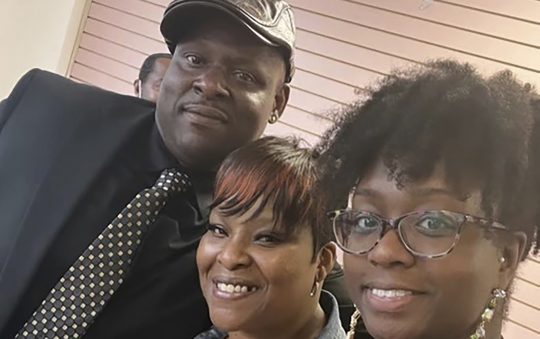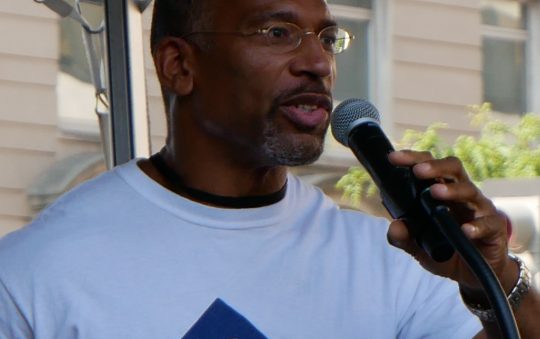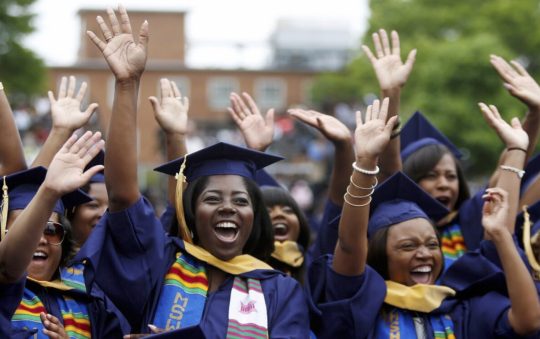
The fate of former Minneapolis police officer Derek Chauvin, charged with the murder of George Floyd, now rests in the hands of a jury. The much-anticipated final day of the Chauvin murder trial was a long, drawn-out battle of opposing theories as to what caused Floyd’s death on May 25, 2020.
The prosecution’s closing argument by Special Assistant Attorney General Steve Schleicher ran close to an hour and 45 minutes, and defense attorney Eric Nelson topped it in length with a sprawling closing argument that ran almost three hours. It was interrupted by Judge Peter Cahill to give the jurors a much-needed 30-minute lunch break. After the break, Nelson continued on for another 15 minutes or so.
Judge Peter Cahill started off the day by giving the jury instructions to inform their deliberations and how they take in the opposing arguments.
Then Schleicher offered the state’s closing argument, introducing Floyd by his full name George Perry Floyd, Jr., and reminding jurors of his formative years surrounded by family who knew and loved him, especially his mother Larcenia “Sissy” Floyd.
Schleicher drew a stark contrast between the idyllic images shown of Floyd’s life as a baby, as a teen, and as a father with the brutal way he died on May 25, 2020, “face down on the pavement” as Chauvin kept his knee on his neck.
All it would have taken for Floyd to have survived that Memorial Day, argued Schleicher, was a little compassion and oxygen—two things that Chauvin deprived him of.
“Nine minutes and 29 seconds. During this time, George Floyd struggled, desperate to breathe to make enough room in his chest to breathe,” said Schleicher. “But the force was too much. He was trapped by the unyielding pavement underneath him, as unyielding as the men who held him down, pushing him with a knee to the neck, a knee to the back, twisting his fingers, holding his legs for nine minutes and 29 seconds.”
Schleicher went on to remind jurors of pulmonologist Dr. Martin Tobin’s testimony that described the agonizing lengths Floyd was reduced to just to breathe. “George Floyd tried; he pushed his bare shoulder against the pavement to lift himself to give his chest and lungs enough room … the pavement tearing into his bare skin…
“So desperate to breathe,” he continued, “that he pushed with his face to lift himself to open his chest.” Although he fought hard for his life, Floyd’s strength ultimately gave out, said Schleicher. He was only human, after all, not “superhuman,” Schleicher told the jurors, cutting into the defense’s theory that Floyd might’ve experienced “excited delirium,” which is alleged to cause superhuman strength.
Schleicher pointed out that Floyd’s big size did not make him a threat, and it did not make using excessive force against him justifiable, as the defense has implied. “Floyd was a big guy—he’s almost as big as Officer [Thomas] Lane,” Schleicher said while showing a photo of Floyd appearing shorter than one of the other arresting officers.
There wasn’t a familiar face to hear Floyd’s last words: “Please; I can’t breathe.” But he uttered them “to someone he did not know by name but knew by the uniform he wore and the badge he wore and he called him ‘Mr. Officer.’ He pleaded with Mr. Officer,” said Schleicher. But that officer failed him and the oath he took to protect and serve.
Schleicher said it might be hard for some jurors to see a police officer in a negative light, but reminded jurors about the testimony of Minneapolis Police Chief Medaria Arradondo and others from the department who condemned Chauvin’s actions. This case is about Chauvin, not all police. “[Chauvin] isn’t on trial for who he was; he’s on trial for what he did,” said Schleicher as a photo of Chauvin zoomed out to show an anguished Floyd underneath his knee.
But what fueled Chauvin’s behavior that day? According to Schleicher, it was simply a matter of ego. He pointed to Chauvin’s body language and posture toward the crowd. He said the bystanders were challenging Chauvin’s authority and “his ego and his pride” but he would show them who’s in control.
The bystanders may have felt powerless watching Floyd die, argued the prosecution, but they did what they could. They gathered their memories, impressions, and “precious recordings” of Floyd’s last moments and they brought them to the witness stand. “They gave them to you,” said Schleicher to the jurors. Now the jurors, just like the “bouquet of humanity” that converged on 38th St. & Chicago Ave. that fateful day, have the power to hold Floyd’s killer accountable.
The defense spent most of its almost three-hour argument stressing the reasonableness of Chauvin’s restraint. Nelson implored the jurors to take in the “totality of the circumstances” and stayed clear of the nine minutes and 29-second video. He never explained why his client kept his knee on Floyd’s neck for that length of time. He just said officers are “capable of making mistakes in highly stressful situations.” He also, for the first time in the trial, called Floyd’s death a “tragedy.” Chauvin noticeably took his mask off for the defense’s argument.
Many legal experts questioned the defense’s use of video from Floyd’s fatal arrest.
Prosecutor Jerry Blackwell delivered the rebuttal for the state. He started off his roughly 40-minute argument by talking about the 46th witness, which he described as “common sense.” Managing to echo both Schleicher and the late coach Denny Green, he told the jurors, “You can believe your eyes; it was what you thought it was.”
Blackwell told the jurors that the defense told them “stories” and not facts or truths. As he repeated this refrain, Nelson objected and Judge Cahill warned Blackwell to be careful about the use of “stories” when referring to the defense’s case.
Blackwell went on to refute the defense’s theories about Floyd’s death, from a drug overdose to excited delirium, to heart failure. He closed by telling the jurors that Floyd isn’t dead because his heart was too big. “The truth of the matter, ” said Blackwell, “is that the reason George Floyd is dead is because Mr. Chauvin’s heart was too small.”
After dismissing a number of motions made by the defense to request a mistrial, Cahill closed out the day with final jury instructions before deliberations. The case is in recess until a verdict is reached.
The jury will have to weigh three charges against Chauvin: second-degree murder, third-degree murder, and second-degree manslaughter. They will have to decide if Chauvin’s restraint of Floyd was a “substantial causal factor” in his death.







